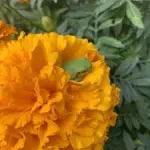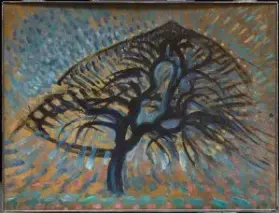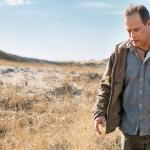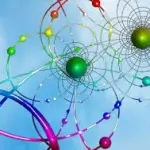(Article is by guest writer, and former contributing writer, Brock Haussamen. See bio below.)
On July 9, 2020, DT Strain presented here a forceful article titled “The Dire Costs of Ignoring Interconnectedness in 2020.” Strain argued that our worst miseries—economic injustice, police brutality, white supremacists, and others—“are rooted in the same foundational sickness: our inability or unwillingness to see, accept, and act in accord with the truth of interconnectedness. . . . The results of not having an interconnected perspective and mindset are . . . concrete and real. Perhaps the most obvious example of Nature hitting us over the head is the pandemic. Interconnectedness couldn’t be made more clear than the red lines drawn by viral propagation.”
Yet I misunderstood interconnectedness at first, taking it mostly as an emphatic version of being connected. What follows here is my effort to better comprehend it. Others may share some of my uncertainty. After all, its parent terms, to connect and connection, have been well-established in English for four centuries, with definitions ranging today from an electrical hook-up to a source for illegal drugs.
But interconnected and interconnectedness are modern terms, appearing in the late 1800s. They likely arose out of scholarship in the sciences, in which the cycles of diseases, the economy, population statistics, voting trends, homelessness, the weather and other complex fields have been studied not only for their patterns but for their influences on each other. Interconnectedness is about what makes processes of all kinds succeed or change or fail.
What interconnectedness is not, it seems, is simply having common or shared qualities or ingredients or histories. For example, the fact that everything began in the Big Bang does not, by itself, indicate that everything is interconnected. Nor does our being made of heavy elements forged in the stars mean that all organisms are interconnected. It just signifies that we have certain characteristics in common. Interconnectedness is more dynamic than that.
Here are Donella H. Meadows’ explanations of what the word refers to in the context of systems, from the opening pages of her superb book, Thinking in Systems: A Primer.
A system isn’t just any old collection of things. A system is an interconnected set of elements that is coherently organized in a way that achieves something. [It] must consist of three kinds of things: elements, interconnections, and a function or purpose….
[For example, a] football team is a system with elements such as players, coach, field, and ball. Its interconnections are the rules of the game, the coach’s strategy, the players’ communications, and the laws of physics that govern the motions of balls and players. The purpose of the team is to win games, or have fun, or get exercise, or make millions of dollars, or all of the above.
A school is a system. So is a city, and a factory, and a corporation, and a national economy. An animal is a system. A tree is a system, and a forest is a larger system that encompasses subsystems of trees and animals. The earth is a system. So is the solar system; so is a galaxy. Systems can be embedded in systems, which are embedded in yet other systems. . . .
When a living creature dies, it loses its “system-ness.” The multiple interrelations that held it together no longer function, and it dissipates, although its material remains part of a larger food-web system. . . .
The interconnections in the tree system are the physical flows and chemical reactions that govern the tree’s metabolic processes—the signals that allow one part to respond to what is happening in another part. For example, as the leaves lose water on a sunny day, a drop in pressure in the water-carrying vessels allows the roots to take in more water. . . .
Many interconnections are flows of information—signals that go to decision points or action points within the system. . . .
You can see from these examples that there is a an integrity or wholeness about a system and an active set of mechanisms to maintain that integrity. Systems can change, adapt, respond to events, seeks goals, mend injuries, and attend to their own survival in lifelike ways, although they may contain or consist of nonliving things. Systems can be self-organizing, and often are self-repairing over at least some range of disruptions. They are resilient, and many of them are evolutionary. Out of one system other completely new, never-before-imagined systems can arise. (11-14)
Hunger, poverty, environmental degradation, economic instability, unemployment, chronic disease, drug addiction, and war, persist in spite of the analytical ability and technical brilliance that have been directed towards eradicating them. No one deliberately creates those problems, no one wants them to persist, but they persist nonetheless. That is because they are intrinsically systems problems—undesirable behaviors characteristic of the system structures that produce them. They will yield only as we reclaim our intuition, stop casting blame, see the system as a source of its own problems, and find the courage and wisdom to restructure it. (4)
Systems can be the source of their own problems in part because feedback loops sustain them, giving them a seeming life of their own. Feedback loops are of two kinds. Reinforcing feedback amplifies an existing trend, for better or worse. The rich get richer. Soil erosion means fewer plant roots to hold the soil, which means more erosion, which means fewer plants. The more I practice piano, the more pleasure I get from the sound, so the more I practice (Meadows 31).
Balancing feedback, on the other hand, stabilizes systems, maintains equilibrium, corrects or reverses the changes amplified by reinforcing feedback. Examples include “a thermostat that regulates room temperature at 68°F, or . . . our own tendencies to sweat or shiver to maintain an internal body temperature of 98.6°F” (Stroh 50).
Feedback loops make systems complex, resilient, and interconnected with other systems. A single complex system may be influenced by multiple reinforcing and balancing loops, some of which are dominant while others are weaker, and whose respective strengths may change over time. If you can imagine the pulls and pushes on what we call “the economy” from interest rates, natural resources management, climate change, labor conditions, the stock market, the pandemic, international trade—then you can imagine complex systems.
I understand better now why short-term fixes like homeless shelters make little difference in the long run for problems such as homelessness that are part of huge socio-economic systems. I also see why those who understand systems say that after you learn how systems work, you don’t look at anything the same way again.
I’ll close with a comment on spirituality and interconnectedness from physicist Lisa Randall in her book—note the title—Dark Matter and the Dinosaurs: the Astounding Interconnectedness of the Universe. Randall explains the possibility that the comet that struck earth 66 million years ago, killed off the dinosaurs, and made room for mammals, had been bumped from its regular orbit by a concentration of dark matter. Dark matter is stuff in the universe that exerts and reacts to gravity but that does not react to light; you can’t see it but when there’s enough of it, you can bump into it. Randall writes in her Introduction:
When I started concentrating on the concepts underlying the ideas in this book, I was awestruck and enchanted… by our current knowledge of our environment—local, solar, galactic, and universal. . . . I also was overwhelmed by the many connections among the phenomena that ultimately allow us to exist. To be clear, mine is not a religious viewpoint. I don’t feel the need to assign a purpose or meaning. Yet I can’t help but feel the emotions we tend to call religious as we come to understand the immensity of the universe, our past, and how it all fits together.
Subscribe to The Spiritual Naturalist Society
Learn about Membership in the Spiritual Naturalist Society
__________
The Spiritual Naturalist Society works to spread awareness of spiritual naturalism as a way of life, develop its thought and practice, and help bring together like-minded practitioners in fellowship.
Sources:
* Meadows, Donella H. Thinking in Systems: A Primer. Chelsea Green Publishing, 2008.
* Stroh, David Peter. Systems Thinking for Social Change: A Practical Guide to Solving Complex Problems, Avoiding Unintended Consequences, and Achieving Lasting Results. Chelsea Green Publishing, 2015.
* Randall, Lisa. Dark Matter and the Dinosaurs: The Astounding Interconnectedness of the Universe. Harper Collins, 2015.
Bio: Brock Haussamen taught English at Raritan Valley Community College in New Jersey until retiring in 2006. He has followed and written for the Spiritual Natural Society for many years. His blog, 3.8 Billion Years: Lives and Life, explores the history of living things and the consolations that it offers. It remains available at 38by.blog.














